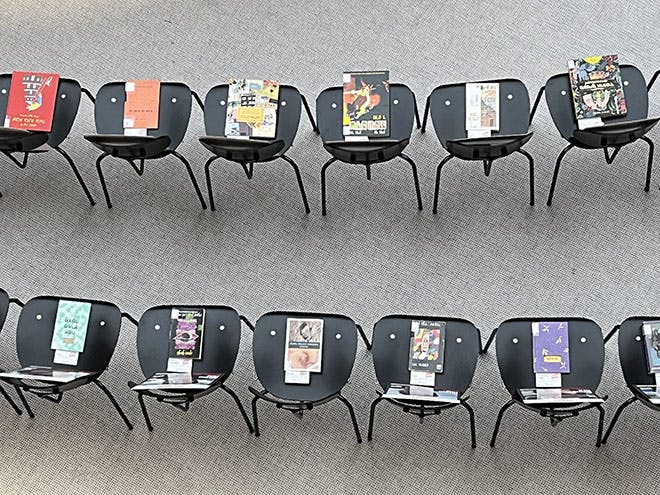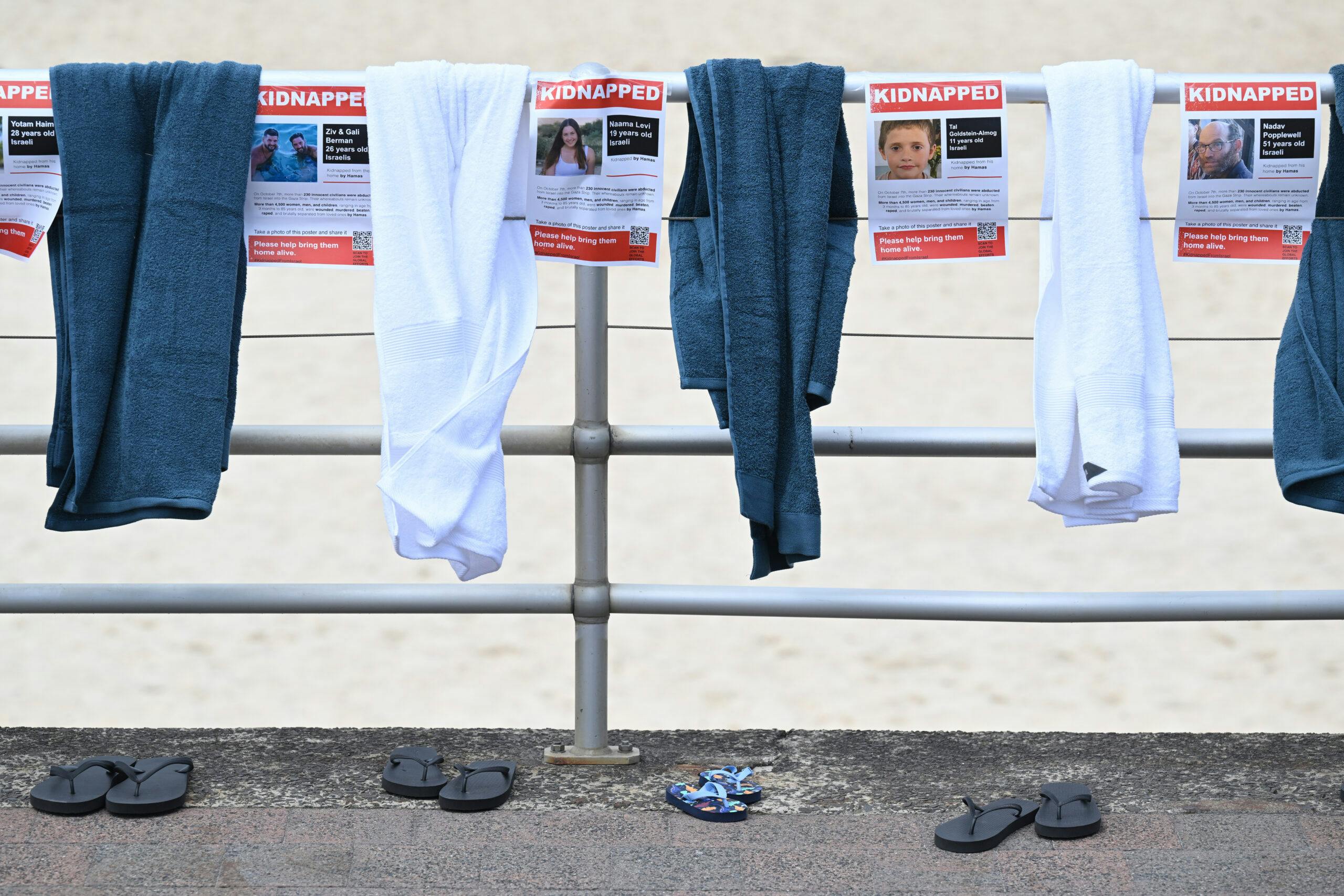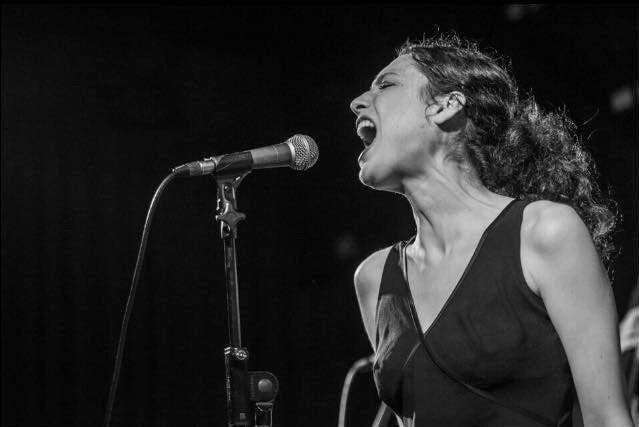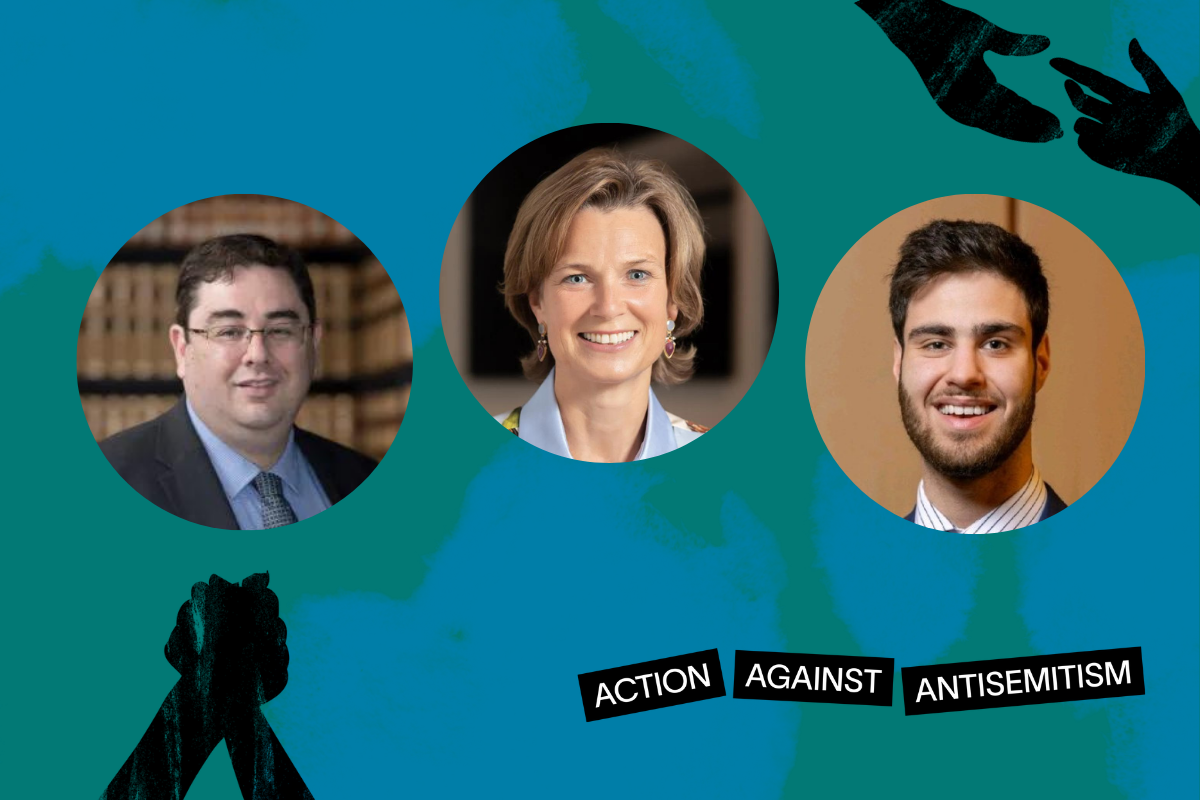Published: 29 January 2024
Last updated: 15 March 2024
French artist Henri Matisse famously said “creativity takes courage” – a sentiment that feels particularly poignant as creatives around the world turn to the streets to try to keep alive awareness of the hostages held by Hamas since October 7.
Large-scale murals, physical installations and collaborative cross-border art projects are among the many tools being used by international artists to advocate for the safe return of the more than 120 hostages still being held by Hamas in Gaza.
Tunnel vision
To commemorate 100 days of captivity, families of those kidnapped built a mock tunnel to raise awareness of the dire conditions faced by the hostages in Hamas’ underground network. The interactive reconstruction – set up outside the Tel Aviv Museum of Art – is deliberately dark, cramped and includes the names of the hostages and messages of hope etched into the walls.
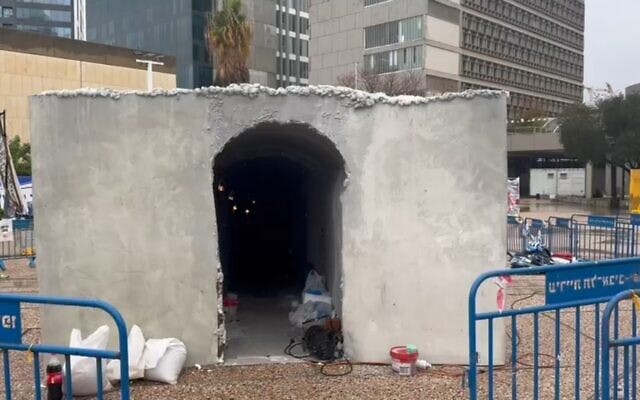
Piano man
The Yellow Piano Installation focuses on hostage Alon Ohel, a 22-year-old musician who was kidnapped from the Nova festival. Produced in New York, Berlin and Tel Aviv, the installation invites the public to participate by playing the piano and has drawn the support prominent musicians around the world.
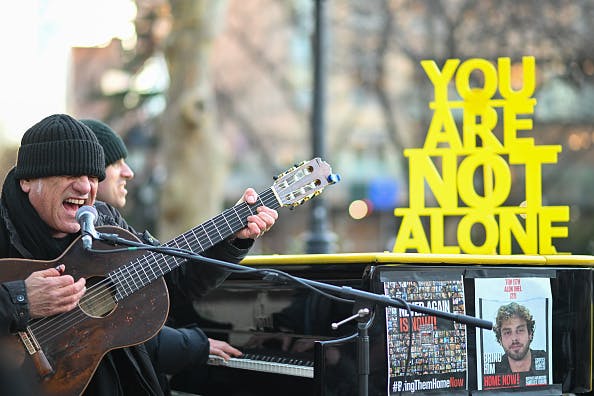
Names and faces
Physically, the biggest art project for the hostages is, perhaps predictably, in California where the Combat Antisemitism Movement and Artists 4 Israel joined forces to create the world’s largest hostage mural.
The almost 37-metre-long mural includes several posters depicting the hostages’ images and personal details – echoing the global guerilla #KidnappedFromIsrael poster project – alongside several street-level posters that have mirrors in place of a captive’s photo to reflect passersby.
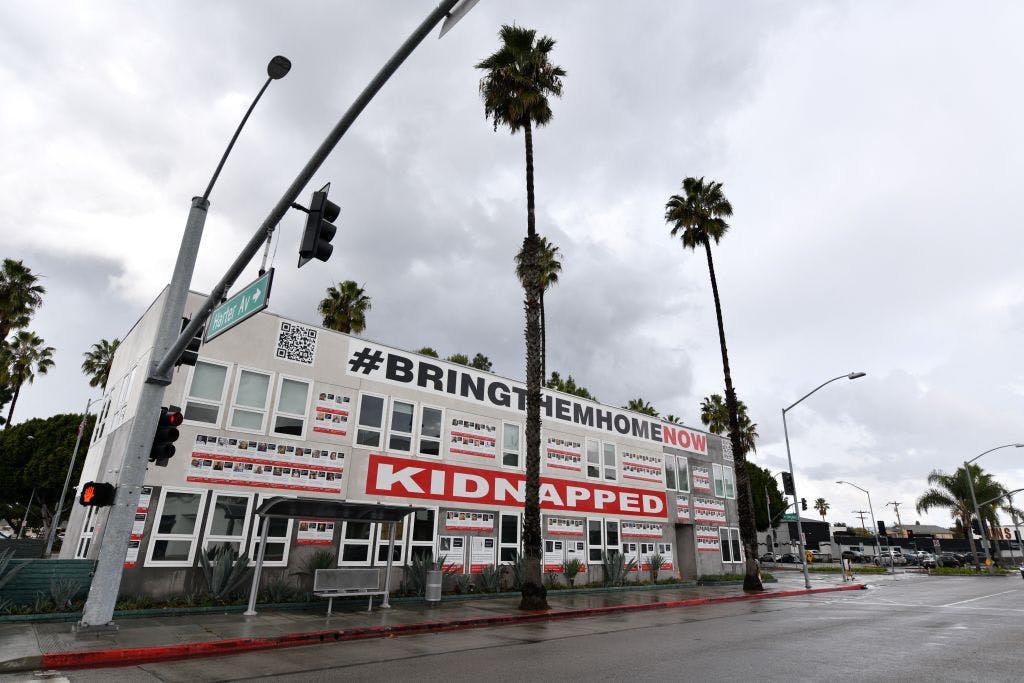
A more poignant individualised mural was created In Israel, where the advocacy group Free Our Kids IL which joined forces with street artists to create a collection of 38 portraits entitled “Walls of Hope”. The murals honour each of the 38 captive children and aim to put pressure on international bodies to secure their safe return.
The "This Is Us" project also created a unique portrait of each hostage, which were painted or drawn by a different Israeli artist. The initiative by Freshpaint Group and Yotzrim Seviva, in collaboration with The Hostages and Missing Families Forum, saw many of the artists work live from the Tel Aviv Museum of Art square.
“It was a very intimate experience for me to paint the portrait of one of the kidnapped hostages. I kept on thinking about what she was going through, and I felt that somehow I was getting to know her personally,” said artist Hodaya Gilad of her portrayal of 18-year-old hostage Liri Albag.
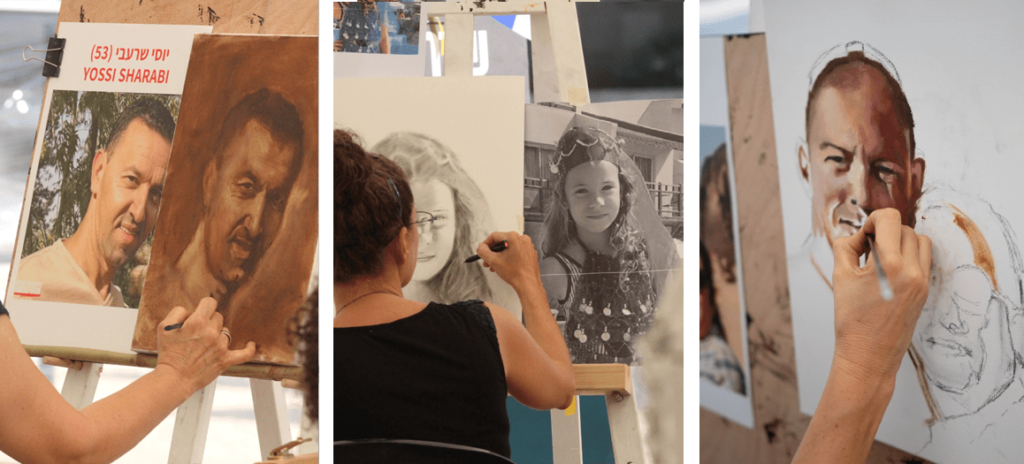
Empty chairs, empty tables
One of the most popular artforms used as a protest tool are installations of empty tables dressed for Shabbat that have been displayed in heavily frequented public areas, from New York’s Times Square to the United Nations in Geneva.
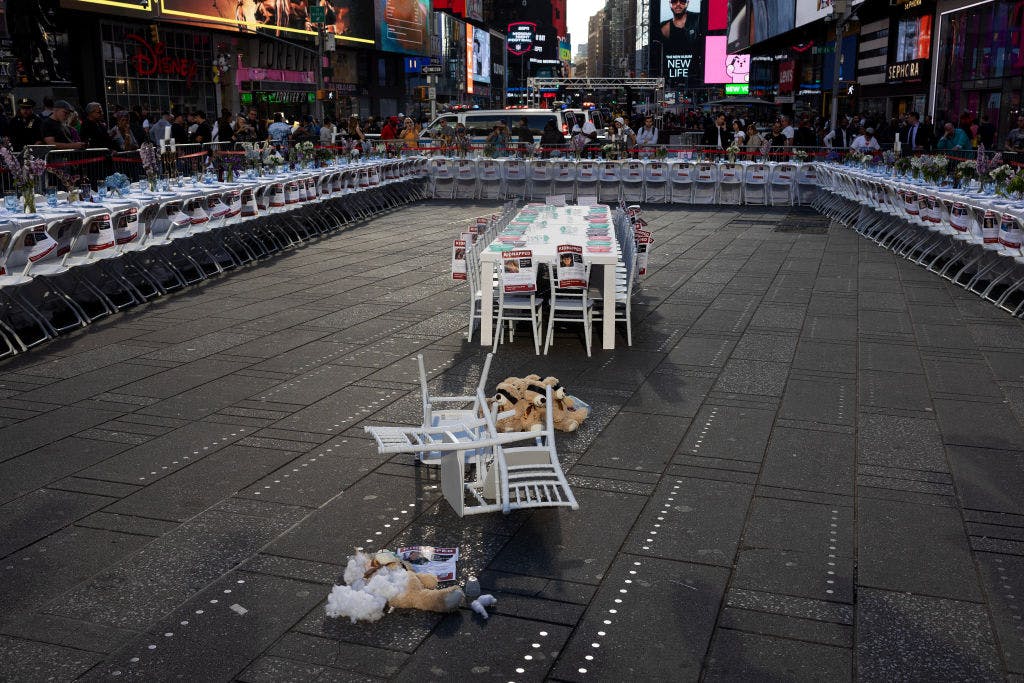
Artists, activists and community groups in countries including Spain, Switzerland, Denmark, Israel, France, America, Austria and England have created eerie empty tables with a place setting for each hostage, and accessories including white roses, highchairs, milk bottles, teddy bears and “Kidnapped” posters.
Closer to home, a large-scale art demonstration took over the front lawn of Canberra’s Parliament House in late November. The installation featured a mass of cardboard cutouts referencing the name of each hostage alongside a statement calling for their release.
The cutouts followed an earlier installation in the same location, which comprised of red balloons, shoes, toys, strollers, wheelchairs, Kidnapped posters and similar messaging lobbying politicians for the urgent and safe return of the hostages.
The project’s organisers, all of which were Israeli-Australian volunteers, also held meetings with federal MPs and engaged in informal conversations about the art campaign.
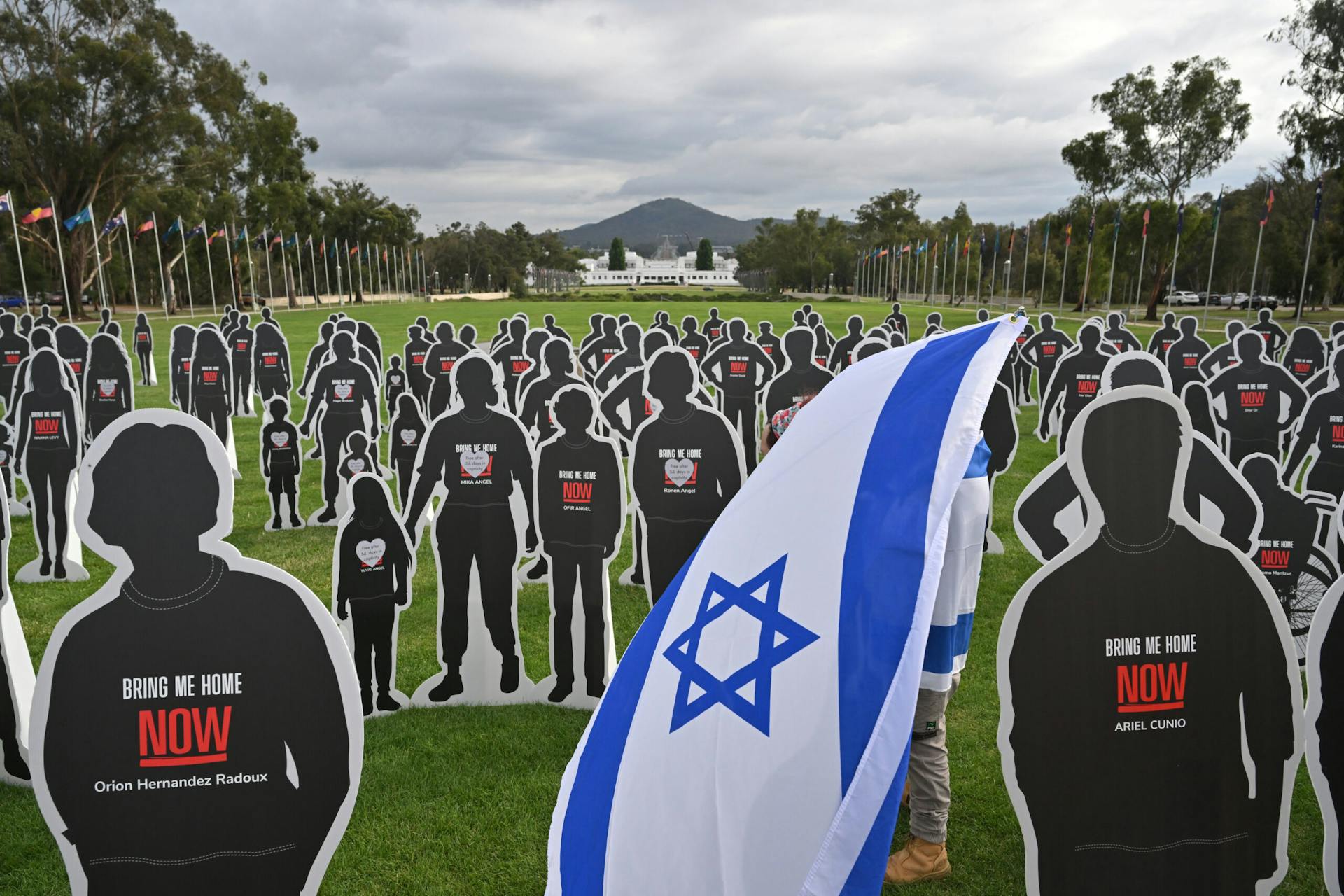
A uniquely Australian image
Bathers heading to Bondi Beach for a swim in November saw 230 blue and white towels each with a pair of thongs and a Kidnapped poster placed along the Pavilion Railing. In a setting where towels and thongs are commonplace artefacts of those who have just gone for a swim, the absence indicated by this installation was powerfully sinister.
NSW police were called when two men attempted to vandalise the tribute's Kidnapped posters – a response that has similarly been directed towards other pro-Israel art projects.
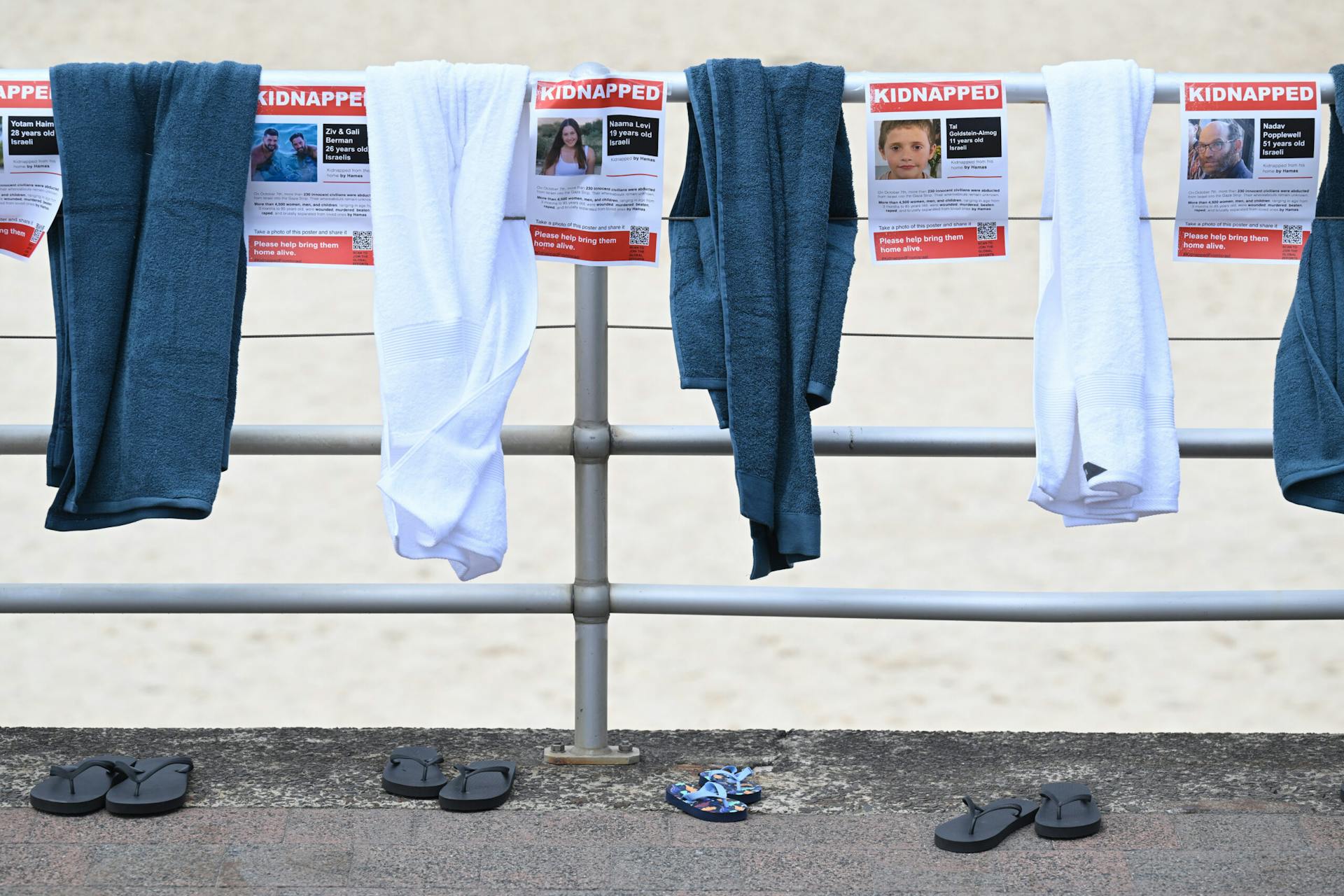
Evocative objects
Museums and art galleries have also created dedicated spaces to support the hostages and pay tribute to those killed by Hamas.
Items salvaged from the Supernova music festival have formed part of an exhibition in Tel Aviv that aims to simulate the aftermath of the October 7 massacre.
The installation entitled “Nova 6.29” – the precise time of the Hamas attack which killed more than 360 festivalgoers – recreates festival scenes with hundreds of retrieved objects from the site, including tents, picnic chairs, sleeping bags and water bottles, set against footage of young people dancing to a DJ.
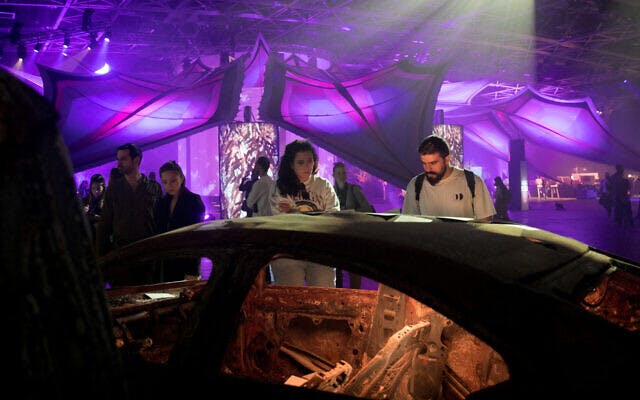
In Jerusalem, librarians have reserved a hand-picked book for each of the hostages for the National Library of Israel’s "Every Hostage Has a Story" exhibit. The books, placed on a chair beside the image of the hostage and a personal library card, aims to portray the hostages' individuality and life stories – accomplished in partnership with their families.
